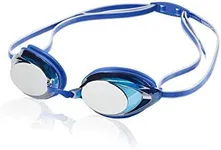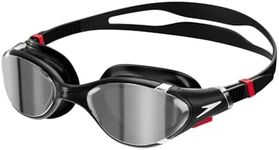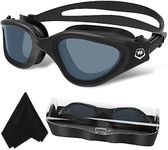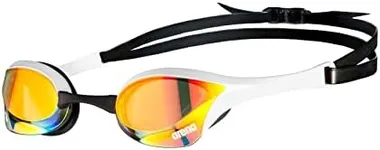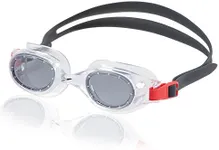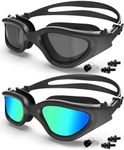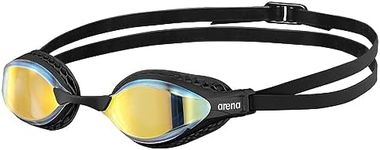Buying Guide for the Best Anti Fog Swim Goggles
Choosing the right anti-fog swim goggles can make a big difference in your swimming experience, whether you’re training, racing, or just enjoying the pool. The right pair should fit comfortably, provide clear vision, and stay fog-free for as long as possible. When shopping, it’s important to consider how and where you’ll use the goggles, as well as your personal comfort and vision needs. Understanding the key features will help you find a pair that matches your swimming style and keeps you focused on your performance, not on adjusting your gear.Anti-Fog CoatingThe anti-fog coating is a special layer applied to the inside of the goggle lenses to prevent them from steaming up. This is important because foggy lenses can make it hard to see underwater, which can be frustrating and even unsafe. Some goggles have a basic anti-fog layer that works for a short time, while others use more advanced coatings that last longer. If you swim often or for long sessions, look for goggles with a reputation for durable anti-fog performance. For occasional swimmers, a standard anti-fog coating may be enough. Remember, how you care for your goggles (like not rubbing the inside of the lenses) also affects how long the anti-fog lasts.
Lens Tint and UV ProtectionLens tint refers to the color or darkness of the goggle lenses, and UV protection shields your eyes from harmful sun rays. Clear lenses are best for indoor pools or low-light conditions, while tinted or mirrored lenses help reduce glare and brightness outdoors. If you swim outside, especially in bright sunlight, choose goggles with UV protection and a darker or mirrored tint. For indoor swimming, clear or lightly tinted lenses are usually more comfortable and provide better visibility.
Fit and SealFit and seal describe how well the goggles sit on your face and how effectively they keep water out. A good fit is crucial for comfort and to prevent leaks. Goggles come in different shapes and sizes, with various nose bridge and strap designs. Some have adjustable nose pieces and straps to help you get a snug fit. If you have a smaller or larger face, look for goggles that offer size options or extra adjustability. Try to test the seal by gently pressing the goggles to your face without the strap; a good pair should stick for a moment, showing a proper seal.
Lens Shape and SizeThe shape and size of the lenses affect your field of vision and how the goggles feel on your face. Larger lenses usually offer a wider view, which is helpful for open water swimming or if you like to see more around you. Smaller, low-profile lenses are often preferred by competitive swimmers because they create less drag in the water. Think about where and how you swim: if you value a wide view and comfort, go for larger lenses; if you want speed and a streamlined feel, choose smaller, racing-style goggles.
Strap and AdjustabilityThe strap keeps the goggles in place and should be easy to adjust for a secure, comfortable fit. Some goggles have a single strap, while others use a split or double strap for extra stability. Quick-adjust buckles or clips can make it easier to get the right fit, especially for kids or if you share goggles with others. If you plan to swim for long periods or do flip turns, look for a strap system that stays put and doesn’t dig into your head.
